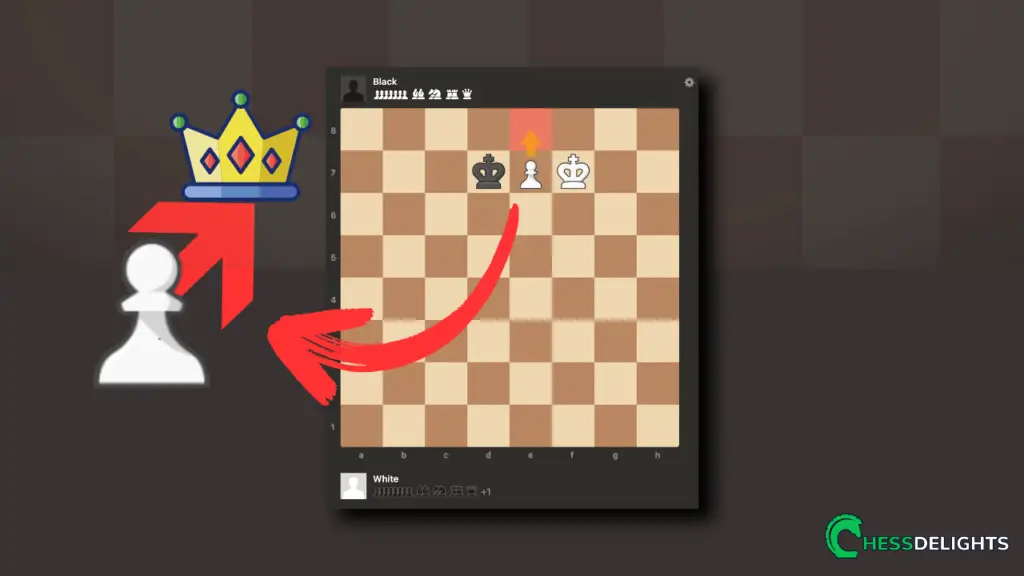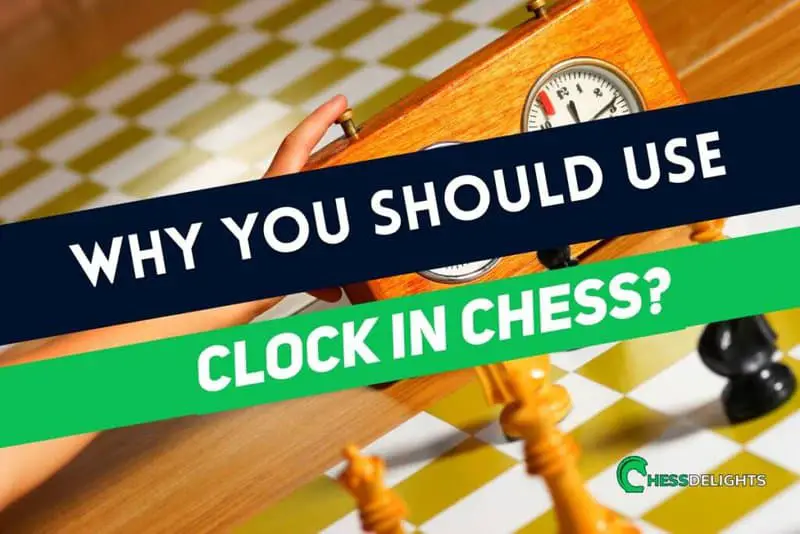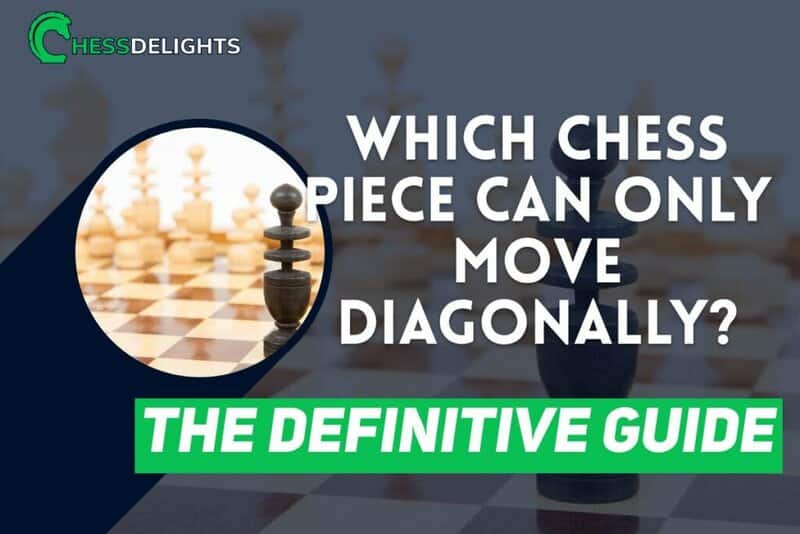Understanding the most powerful chess piece is important because it allows players to make strategic moves, control the board, and ultimately increase their chances of winning the game.
The most powerful chess piece on the board is the queen, which is also a symbol of dominance and authority. The queen has a significant influence on the game and can be used to create threats and winning opportunities.
As a chess player for a long time, I have witnessed firsthand the significance of the queen in shaping the outcome of a game.
In this guide, we will delve into the importance and use of this powerful chess piece, exploring its unique abilities, strategic value, and more.
Table of Contents
Importance And Use Of The Most Powerful Piece In Chess
The queen is undoubtedly the most powerful and versatile piece on the chessboard. Its unique abilities and strategic value make it an essential component in any chess game.
I cannot emphasize enough the importance of understanding and utilizing the queen effectively.
Here are the reasons why the queen is an important piece in the game of chess:
- The queen's mobility sets it apart from all other chess pieces. It can move any number of squares in any direction – horizontally, vertically, or diagonally.
- The queen's ability to attack multiple targets simultaneously is another crucial aspect of its strategic value. By placing the queen on a central square, it can exert influence over various areas of the board simultaneously.
- The queen's power increases as the game progresses. In the opening and early middlegame, it is generally advisable to develop minor pieces before bringing out the queen.
This immense range allows the queen to control a significant portion of the board, making it an excellent tool for both offense and defense.
[snippet]
The queen's versatility also extends to its role in different types of positions:
- In open positions with fewer pawns and more open lines, the queen can become a dominant force, coordinating with other pieces to create threats and initiate tactical combinations.
- In closed positions with blocked pawn structures, the queen can be used to maneuver around obstacles and find weaknesses to exploit.
[/snippet]
Important ideas to keep in mind when using the queen:
- Placing it too early in vulnerable positions can lead to tactical vulnerabilities that opponents can exploit.
- Over-reliance on the queen can result in neglecting other pieces' development or exposing it to potential traps.
- Understanding and utilizing the unique abilities and strategic value of the queen is crucial for any chess player.
It is essential to balance the queen's power with caution and ensure that it is used in coordination with other pieces to achieve optimal results.
Most Powerful But The Weakest Chess Piece
The most powerful but weakest chess piece is the pawn. While pawns have limited mobility and can only move forward, they possess the potential to become the most powerful piece on the board if they reach the opponent's back rank and promote to a queen, rook, bishop, or knight.
Pawns play a crucial role in controlling the center of the board, creating pawn structures, and initiating attacks.
They can also be used as a tactical weapon, such as in pawn sacrifices or pawn storms.
However, individually, pawns are relatively weak compared to other pieces due to their restricted movement and vulnerability.
Recommended reading: If you want to learn more about pawns and rules, check out this guide for complete rules in chess for pawns.
Most Powerful Chess Pieces In Order Of Importance

The most powerful chess piece, in order of importance, is undoubtedly the queen.
- The queen combines the abilities of both the rook and the bishop, making it the most versatile and influential piece on the board.
Its ability to move in any direction, any number of squares, allows it to control vast areas of the board and launch devastating attacks. - Next would be the rook. The rook's ability to move horizontally and vertically across the board makes it a formidable piece, especially in open positions.
Rooks are often used to control files and ranks, creating threats and supporting other pieces in their endeavors. - Following the rook, we have the bishop. Bishops are unique in that they can only move diagonally, but they can cover long distances on an open board.
Two bishops working together can create a powerful force, controlling both light and dark squares simultaneously. - The knight comes next in terms of importance. Knights have a distinct way of moving, jumping over other pieces in an L-shape pattern. This makes them excellent for tactical maneuvers and surprise attacks.
Knights are particularly effective in closed positions, where their ability to jump over obstacles becomes crucial. - Now we have the pawns. Although pawns are considered the weakest pieces individually, they play a vital role in chess strategy.
Pawns control key squares on the board, restrict opponent's pieces, and can eventually promote into more powerful pieces if they reach the eighth rank.
Recommended reading: If you want to learn about promoting pawns in chess, check out this complete guide about pawn promotion.
It is important to note that while this ranking provides a general understanding of piece importance, each piece's value can vary depending on the position and stage of the game.
In certain situations, a well-placed knight or pawn can be more influential than a poorly positioned queen or rook.
Therefore, it is crucial for chess players to assess each position carefully and adapt their strategies accordingly.
How Positions Changes The Power Of A Chess Piece
The power of a chess piece is greatly influenced by its position on the board.
Because the position determines the potential scope of influence and effectiveness of a chess piece.
Let's explore how different positions can change the power of a chess piece.
1. The centralization of a piece is crucial. When a piece occupies a central square, it gains more control over the board and has greater mobility.
For example, a centralized knight can attack multiple squares and potentially fork enemy pieces. On the other hand, a piece confined to the edge or corner of the board has limited options and is less influential.
2. The coordination between pieces plays a significant role in enhancing their power. When pieces work together harmoniously, their combined strength becomes greater than the sum of their individual powers.
For instance, a rook and queen coordinating their attacks can create devastating threats against the opponent's position.
And poorly coordinated pieces may hinder each other's potential and limit their effectiveness.
3. The presence or absence of pawn structures can impact a chess piece's power.
Pawns act as shields and provide support for other pieces. A well-structured pawn formation can create safe havens for pieces while restricting the opponent's advances.
On the contrary, weak or isolated pawns can expose pieces to vulnerabilities and limit their mobility.
4. The activity level of a piece determines its power. An active piece exerts pressure on the opponent's position and creates threats that need to be addressed.
Active pieces are more likely to find tactical opportunities and contribute significantly to an attack or defense.
And passive or poorly placed pieces lack influence and become easy targets for opponents.
5. The stage of the game also affects a piece's power.
In the opening, development and control over key squares are crucial for each piece's effectiveness.
In the middlegame, when positions become more complex, tactical possibilities arise, allowing powerful combinations involving multiple pieces.
And, in the endgame, the power of pieces often increases as the board opens up, and their mobility becomes less restricted.
It is true that the power of a chess piece is heavily influenced by its position on the board.
Centralization, coordination, pawn structures, activity level, and the stage of the game all play significant roles in determining a piece's effectiveness.
I do emphasize the importance of understanding these positional factors for you, as it allows you to make informed decisions and maximize the power of your chess pieces.
How The Abilities And Roles Determine The Power Of A Chess Piece

The abilities and roles of chess pieces play a crucial role in determining their power on the chessboard.
Each piece has its unique set of abilities and functions, which contribute to its overall strength and influence in the game.
Understanding these abilities and roles is essential for players to make strategic decisions and assess the value of each piece.
The power of a chess piece is primarily determined by its mobility, attacking potential, defensive capabilities, and positional influence.
Here's how these factors can contribute to the overall power of each piece:
1. Mobility: The ability to move freely across the board is a fundamental aspect of a piece's power.
Pieces with greater mobility can control more squares, attack multiple targets, and participate in various tactical maneuvers.
For example, the queen has the highest mobility as it can move in any direction across any number of squares.
2. Attacking Potential: A piece's ability to threaten and capture its opponent's pieces is crucial for gaining an advantage.
Chess pieces with strong attacking potential can put pressure on the opponent's position, create threats, and initiate tactical combinations.
The queen, rooks, and bishops are known for their strong attacking capabilities.
3. Defensive Capabilities: A piece's ability to protect its own position and defend other pieces is equally important.
Chess pieces that can defend effectively provide stability to a player's position and prevent easy attacks from the opponent.
Knights are often valued for their defensive capabilities due to their unique L-shaped movement.
4. Positional Influence: The ability of a piece to control important squares or influence specific areas of the board contributes to its power.
Chess pieces that occupy central squares or control key diagonals, files, or ranks have a significant impact on the game.
Bishops are particularly powerful when positioned on long diagonals, while rooks excel on open files.
Let's take a look at each piece and their specific role within the chess game:
1. King: The king's primary role is survival and protection. It is the most valuable piece, and its loss results in defeat.
The king's mobility is limited, but it plays a crucial role in the endgame.
2. Queen: The queen is the most powerful piece, combining the abilities of both rooks and bishops. Its role is to control the board, attack, and defend.
The queen's versatility makes it a formidable force in all stages of the game.
3. Rook: Rooks are powerful pieces that excel in open positions and on open files. Their primary role is to control ranks and files, support other pieces, and participate in endgame activities.
4. Bishop: Bishops are long-range pieces that operate on diagonals. They are particularly strong when positioned on open diagonals, controlling multiple squares simultaneously.
Bishops work well together, complementing each other's weaknesses.
5. Knight: Knights have a unique L-shaped movement, allowing them to jump over other pieces.
Their role includes tactical maneuvers, defending key squares, and initiating attacks in closed positions.
6. Pawn: Pawns are the least powerful pieces individually but can become very useful when advanced strategically.
They play a crucial role in controlling the center, creating pawn structures, and being promoted to the most powerful chess piece.
Understanding these factors and utilizing each chess piece's role effectively is essential for success on the chessboard.
Useful External Resource: If you want to learn more about strongest chess piece, check out the conversations from chess.com forum about most powerful chess piece.
Frequently Asked Questions
Which Is More Important In Chess The King Or Queen?
In chess, both the king and the queen are crucial pieces, but they serve different purposes and have distinct roles in the game. It is difficult to determine which one is more important, as their value and significance depend on the specific stage of the game and the position on the board.
Now that we know that the queen is considered the most powerful piece on the chessboard due to its versatility and ability to move in any direction.
On the other hand, the king is the most vital piece in chess as its safety and protection are paramount. The objective of the game is to checkmate the opponent's king, so ensuring your own king's safety is crucial.
In the endgame, when most of the pieces have been exchanged, the king becomes more active and plays a more prominent role in controlling key squares and supporting pawns in their promotion.
Ultimately, both pieces have their own unique importance in chess…
While the queen possesses greater attacking potential and versatility. The king's safety is the priority throughout the game, especially during critical moments.
Why Is The Queen The Strongest Chess Piece?
The queen is considered the strongest chess piece because of its versatility and power on the board.
Here are a few reasons why the queen holds such a prominent position in the game:
1. Mobility: The queen has the ability to move in any direction, horizontally, vertically, or diagonally, across any number of squares. This exceptional mobility allows the queen to control a large portion of the board and reach almost any square on it.
2. Attack and Defense: The queen possesses both offensive and defensive capabilities. It can be used to launch powerful attacks against the opponent's pieces or position itself strategically to protect important squares or pieces on your own side.
3. Value: The queen is the most valuable piece on the board, worth 9 points in terms of material value. Its high value reflects its strength and importance in the game.
4. Tactical Opportunities: The queen's range of movement opens up numerous tactical possibilities. It can create threats, forks, pins, and other tactical combinations that can lead to significant advantages or even checkmate.
5. Endgame Dominance: In the endgame, when there are fewer pieces on the board, the queen's power becomes even more pronounced. Its ability to control multiple squares and deliver checkmate makes it a formidable force in securing victories.
While the queen is undoubtedly a strong piece, it is important to remember that its strength should be utilized wisely.
Overexposing or misplacing the queen can lead to vulnerabilities that an opponent can exploit. Therefore, understanding how to effectively coordinate your other pieces with the queen is crucial for success in chess.
What Is The 2nd Strongest Piece In Chess?
The second strongest piece in chess, after the queen, is the rook. The rook is a powerful piece that can dominate the board and play a crucial role in both the opening and endgame stages of the game.
The rook has a unique movement pattern, being able to move horizontally or vertically any number of squares.
This allows it to control entire ranks and files, making it a formidable force on an open board. The rook's ability to move freely across the board gives it great flexibility and versatility.
In the opening, the rooks are usually developed by connecting them on the back rank. This allows them to support each other and control important central squares.
Rooks can also be used to launch powerful attacks along open files, targeting the opponent's king or weak pawns.
During the middlegame, rooks often play a crucial role in coordinating with other pieces and creating threats.
They can be used to control key squares, support pawn pushes, or participate in tactical combinations. Rooks are particularly effective when they are placed behind passed pawns, as they can provide strong support for their advancement.
In the endgame, rooks become even more powerful as they have more open lines to work with.
They excel in situations where there are few pieces left on the board. Rooks can create mating threats, support passed pawns, or engage in tactical maneuvers to win material.
Hope you learn something new in this guide.
Enjoy learning and playing chess!
Essential Chess Resources: Let's take your learnings to the next level by checking out our recommended chess resources.







